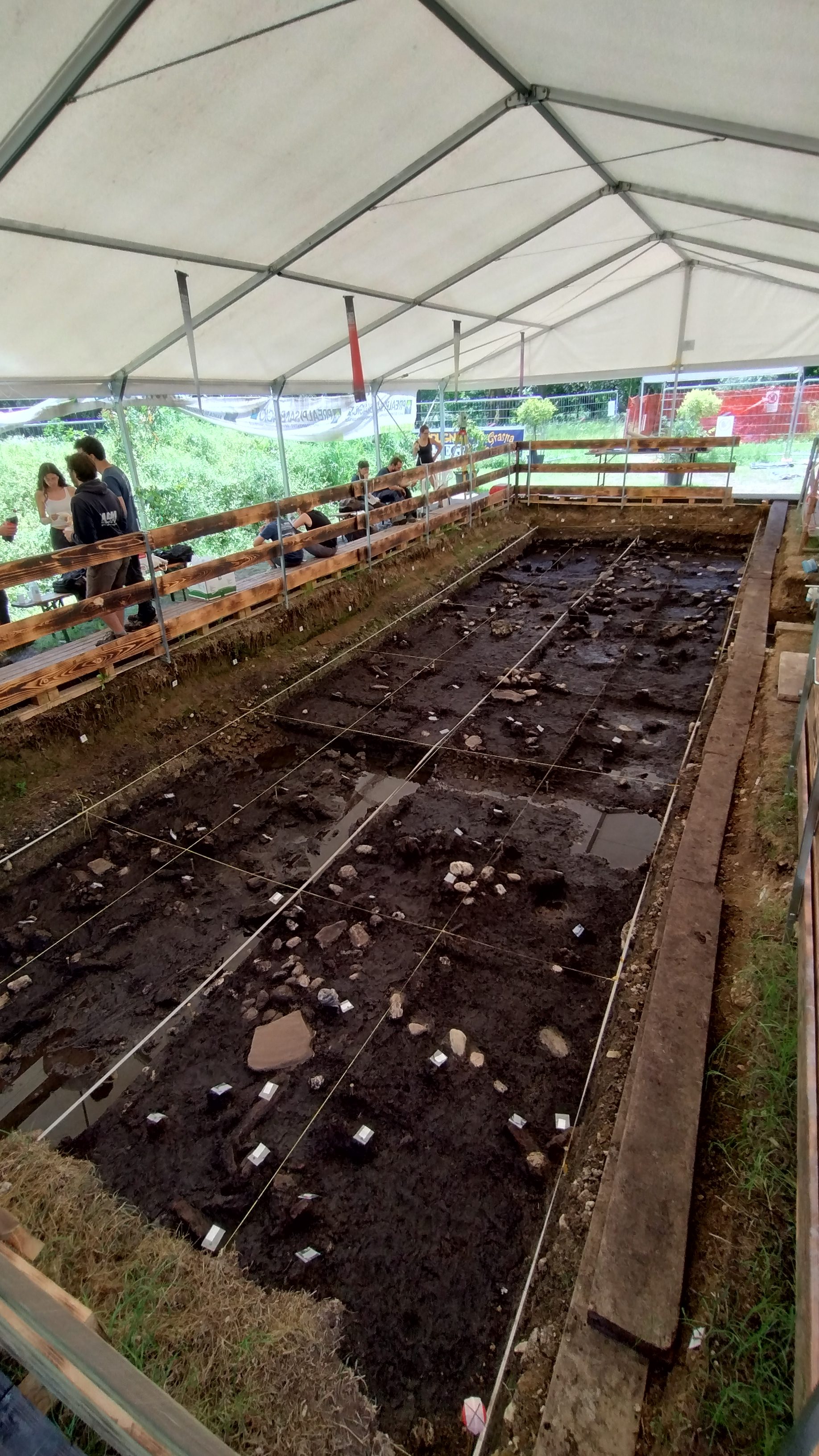Fieldwork
This listing expired on September 30, 2024. Please contact mdlmrt@unife.it for any updated information.

Location: Colmaggiore di Tarzo
Season: September 2, 2024 to September 30, 2024
Application Deadline: July 23, 2024
Deadline Type: Exact Date
Website: http://www.relacus.xyz
Program Type:
Volunteer
RPA Certified:
No
Affiliation:
University of Ferrara
Project Director:
Dr. Marta Modolo
Project Description:
The lakes of San Giorgio and Santa Maria are two basins, mostly watersheds, located in a glacial valley named “La Vallata” at 225 m asl at the foothills of the Veneto Pre-Alps. Administratively, this area falls in the municipalities of Revine-Lago and Tarzo. The first important discovery dates to 1923, when a Sauerbrunn bronze sword (15th century BC) was found during the excavation of an artificial canal connecting the two lake basins, followed by another analogous little sword and two Peschiera daggers (13th century BC). In 1987, further excavations to extract peat documented the first pile-dwelling remains (burnt wooden fragments, plank floors, and embankments). In this circumstance, the Superintendence of the Veneto Region was alerted and promoted a first survey campaign in 1989, followed by two excavations in 1992 and 1997. These fieldworks proved that these remains belonged to a peri-lacustrine settlement, representing one of northern Italy’s most important pile-dwelling sites. According to pottery, the Colmaggiore site dates to the final Neolithic and early Eneolithic, with a frequentation during the ancient and middle Bronze Age.
Since 2019, through the reLacus project, a new phase of archaeological research has been started in the San Giorgio and Santa Maria lakes. The scientific objectives include the ex novo identification of prehistoric and protohistoric settlement areas and the interpretation of the stratigraphic successions to reconstruct anthropic and natural events and provide information on the typology, use, and methods of ancient human groups’ settlements.
Therefore, in the same year, the Department of Humanistic Studies of the University of Ferrara, in synergy with the Soprintendenza Archeologia, Belle Arti e Paesaggio per l’area metropolitana di Venezia e le province di Belluno, Padova e Treviso, and in collaboration with the University of Padua, launched the first excavations, under ministerial concession.
Data collected with underwater surveys carried out along the shorelines, geoarchaeological core sampling used to define and interpret the sedimentary sequence, and stratigraphic surveys contributed to the first data on areas affected by archaeological evidence. From 2022, a series of non-invasive geophysical surveys carried out on over 10,000 m2 of land have made it possible to identify concentrations of magnetic anomalies and variations in soil electrical permittivity, indicators of the potential presence of structures underground. As proof of these preliminary data, an excavation sector of about 70 m2 in extension was opened in 2023. Furthermore, data deriving from ground-penetrating radar acquisitions enabled the identification of the ancient shore’s lake on parcels of land reclaimed in historical times. The opening of the main excavation sector allowed the identification of an anthropised and relatively homogeneous layer of peat, which documents one or more settlement phases in the area. Above this level, a sedimentary unit of silt-clay deposition sealed the anthropic layer, allowing exceptional conservation of the remains. The soil sampling and the study of sediments made it possible to integrate the archaeologists’ interpretations, providing a detailed analysis of the stratigraphy with millimetric detail of the sediments.
Beyond scientific research, a further goal of this project is disseminating results to the public and school groups. Consciousness toward scientific research, the protection of cultural heritage, and the opportunities offered by culture for territorial sustenance allow the creation of awareness and various collaboration possibilities. Every year, we organize workshops and guided tours to the excavation area for the regional territory’s schools, also in collaboration with the Parco Archeologico Didattico del Livelet. One of the latest activities, in partnership with the association of Vittorio Veneto, allowed even the most vulnerable people to learn about this important archaeological context through a specially dedicated guided tour. Constant contact with cultural media, whether regional, national, or international, further contributes to disseminating research status, progress, and the findings’ singularity. Furthermore, these topics and the planned initiatives are regularly announced on the project’s website and Facebook and Instagram pages.
Period(s) of Occupation: The chronology of the context is placed towards the end of the Neolithic, at the beginning of the Copper Age, when groups of farmers and breeders populated the pre-Alpine valleys. A sporadic frequency during the Bronze Age is also documented, as evidenced by some ceramic decorations and the presence of a bronze fishing hook.
Project Size: 1-24 participants
Minimum Length of Stay for Volunteers: 2 weeks
Minimum Age: 25
Room and Board Arrangements:
Paid by the organization (University of Ferrara)
Academic Credit:
Yes, they can be requested to the Excavation Director (Marta Modolo, mdlmrt@unife.it).
Telephone number: +39 3491344323
The AIA is North America's largest and oldest nonprofit organization dedicated to archaeology. The Institute advances awareness, education, fieldwork, preservation, publication, and research of archaeological sites and cultural heritage throughout the world. Your contribution makes a difference.
Notifications